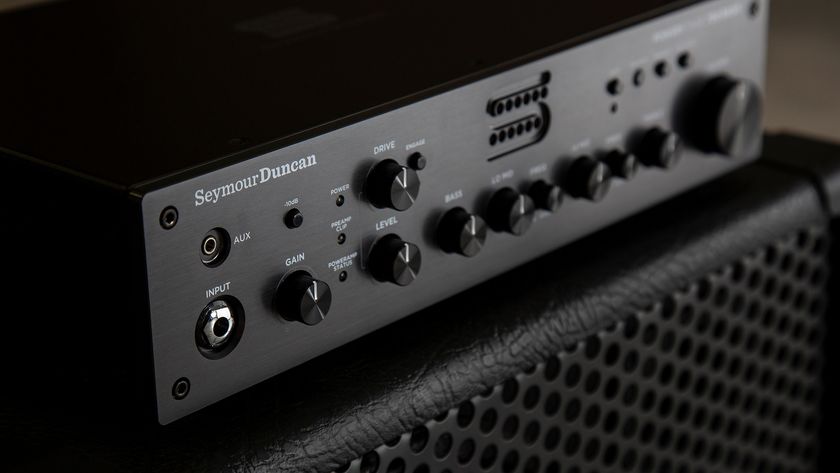Book Review: 'Sound Innovations for Guitar' by Aaron Stang and Bill Purse

It’s about freakin’ time!
Finally, somebody came out with a beginner instructional guitar method book series for adults and teenagers that’s not an outdated, depressing turn-off that makes you want to throw your guitar off a cliff after having struggled to learn embarrassingly unsatisfying versions of the audience favorites “Mary Had a Little Lamb” and “Three Blind Mice.”
Sound Innovations for Guitar is a thoughtfully conceived and well-executed series of guitar method books (with accompanying DVDs) made for people who love guitar music and live in the real, modern world. It is a tool that engages your interest and harnesses your intuition, various senses and different modes of learning, as well as the latest digital technology, to get you playing things that you will be eager to practice and proud to show off.
Instead of starting you off by teaching you how to play wimpy-sounding nursery rhyme melodies and rinky-dink little chords on the skinny strings, like the most notorious and reviled guitar method books of the 20th century do, authors Aaron Stang and Bill Purse get your motor running by introducing you to big, authoritative-sounding, bass-line-oriented riffs on the thick, low strings, which is the way many classic rock, blues and pop guitar riffs are written — riffs you will want to jam along to with a drummer!
This low-notes-first approach is inherently superior and more practical and useful than starting from the high E string and working your way down across the strings. As you are introduced to the notes, you progress forward through the musical alphabet (as opposed to backward), and starting on the low strings makes for better left- and right-hand technique development. Best of all, it allows you to immediately and logically become introduced to full-sounding chords right away, from their root notes on the low E and A strings.
Keeping with the whole “real world” orientation, you are introduced to, along with traditional sheet music notation, various modern, easy-to-learn notation formats that working guitar players and songwriters use, such as tablature, chord frames, lead sheets and “Internet-style” lyric-chord sheets.
The presentation of the information is brilliantly conceived, with much of the dry, must-know answers to basic FAQs neatly organized into appendices at the back of each book for quick, convenient reference — as opposed to it all being presented at the beginning of the book, which dilutes the excitement factor by delaying the quick-start, hands-on approach.
Get The Pick Newsletter
All the latest guitar news, interviews, lessons, reviews, deals and more, direct to your inbox!
Each book’s accompanying DVD offers state-of-the-art production values and numerous features and resources, such as video segments of both authors discussing and demonstrating every musical example presented and cross-referenced in the book, with lots of close-up camera angles and meaningful coaching and exciting accompaniment where warranted.
The DVD also includes professionally produced play-along audio tracks that can be easily uploaded to a computer and a software application that enables you to variably slow down the tempo, or speed, of each recording without altering its pitch, which is an invaluable practice aid!
Rather than isolate skills and techniques into dry exercises, the authors present everything in the form of usable musical vocabulary — riffs and commonly used patterns, chords and rhythm playing techniques — all within the context of exciting repertoire, spanning traditional, rock, blues and classical music, that is rewarding, fun to perform, and lays a foundation for more songs to come.
This instructional product is equally well suited for individual or classroom instruction, as well as DIY renegade types. Check out the full online brochure at http://www.alfred.com/SIGuitarBrochure.aspx.
Sound Innovations for Guitar by Aaron Stang and Bill Purse
Available from Alfred Music Publishing
Over the past 30 years, Jimmy Brown has built a reputation as one of the world's finest music educators, through his work as a transcriber and Senior Music Editor for Guitar World magazine and Lessons Editor for its sister publication, Guitar Player. In addition to these roles, Jimmy is also a busy working musician, performing regularly in the greater New York City area. Jimmy earned a Bachelor of Music degree in Jazz Studies and Performance and Music Management from William Paterson University in 1989. He is also an experienced private guitar teacher and an accomplished writer.

Industry expert and YouTuber Adam Saunders launches new books to break down the barriers of music theory to make songwriting simple

“He scoured the globe to find these guitars. I had given many away or sold them through the years, but he tracked them down”: A 1,000-page book showcasing Steve Vai’s iconic guitars has been announced – and it will be joined by a super-limited Ibanez JEM







![[L-R] George Harrison, Aashish Khan and John Barham collaborate in the studio](https://cdn.mos.cms.futurecdn.net/VANJajEM56nLiJATg4P5Po-840-80.jpg)



